1970 24 Hours of Daytona
Racing in the Daytona 24 Hours was a massive privilege for me. It all came about because the guy who had backed me in Trans-Am with a Porsche, Marvin Davidson, bought a couple of Ferraris – he was a Wall Street investment banker! He was no longer going to fund any racing, but he talked to Luigi Chinetti of the great North American Racing Team about having a Trans-Am champion on his team. Chinetti thought it was a good idea, so I was in – this was my introduction to world endurance racing.
I was part of a two-car effort with the glorious 312P in coupe configuration. It was a Formula 1 car with a body on it. You could run it to 10,500 – 11,000 rpm and it would just sing. The handling and braking and everything else were unbelievable.
I was paired with veteran sportscar racer David Piper. I was thrilled to be with him because I thought he was a great guy and he was a big racer for Ferrari and Porsche over the years. NART’s other car was shared by Sam Posey and Mike Parkes – it needed a cockpit bubble because they were so tall! My car was looked after by Carroll Smith, an old ally from my US F5000 title year in ’69.
In the race, things were going really well. After Parkes had hit the wall and pitted to have the damaged radiator fixed, our car took the lead and built up a good margin. It all felt too easy, which is when the race became an unbelievable chain of events.
The track surface began to break up and bits of the coral surface under the asphalt were flying up. Eventually, some of the debris damaged our radiator. I came into the pits shouting, “Aqua, aqua!” to be told the other car had the only spare radiator in it and I should carry on with no water. Well, that wasn’t going to work, was it?!
I was told to run no more than 9500 rpm and get on with it. And, amazingly, it kept going.
Later on, the car went up in smoke and I thought, ‘Well, that’s that, the engine has finally expired.” I pitted again and was surrounded by Ferrari mechanics. Turned out it was just an oil seal that had gone, so the guys replaced it and sent me on my way again.
That car ran for more than five-and-a-half hours with no water in it and we finished second in the prototype class – to Sam and Mike – and fifth overall.
Back-to-back professional road racing championships led the way to many new opportunities for me as a driver. None was more memorable than receiving a call from Mr. Luigi Chinetti, father of NART, to drive one of the Ferrari 312P’s entered in the 24-hour race at Daytona Speedway for the February 1970 race.

Adamowicz collection – courtesy of Phil Henny
I’d been a Ferrari fan all my life and here I was in a world endurance 312P that was capable of winning one of the world’s biggest races!
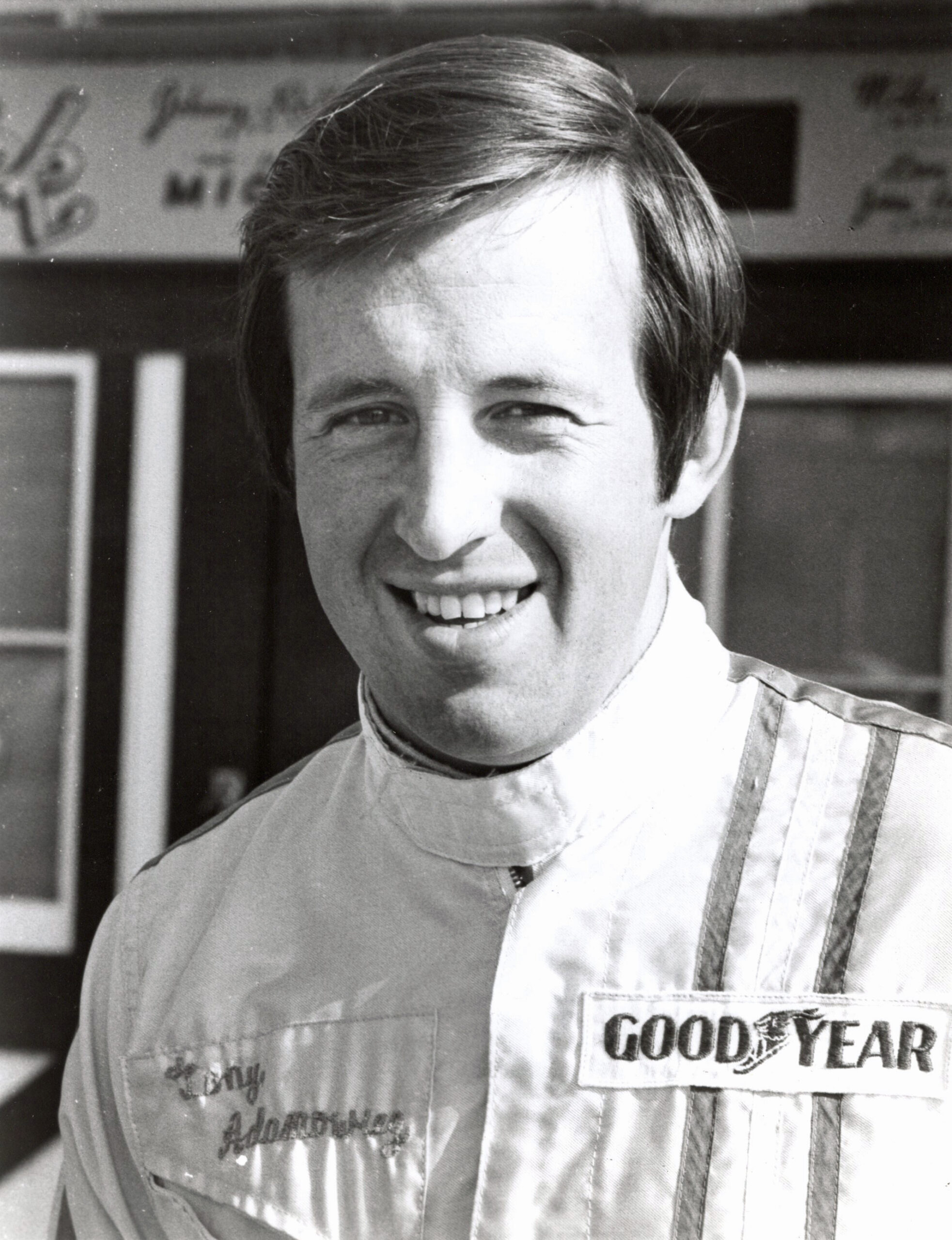
Adamowicz collection
Public Relations photo
January 31 – February 1, 1970
24 Hours of Daytona
Daytona International Speedway
Daytona Beach, Florida
Ferrari 312P
Result: 5th

This was my first Ferrari ride and what a drive it was to be. I was teamed with Englishman David Piper in chassis No 0870, while Michael Parkes and Sam Posey were in chassis No 0872. Both were in the coupe configuration, most impressive in appearance by the low overall height and louvered rear window blending to the tail.
I was most amazed with the chassis configuration, fully adjustable upper and lower, unequal length wishbones at the front with coil spring and damper units plus an adjustable anti roll bar, while at the rear there was a reversed lower wishbone, top link and twin radius arms per side. However, more F1 inspired technology was to be revealed by the sound of this fine engine. The engine was current 312F Formula 1, 60-degree 3-liter upright V-12 – wow! I was in the big time.

Adamowicz collection – Michael Keyser photo (autosportsltd.com)
The 1970 Daytona 24-hours was Tony’s first race in a Ferrari, SN 0870
Nothing could awake your adrenaline more than to hear the sound of 420 bhp at 9,800 rpm. Although we could rev the engine to 11,500, we were told to conserve our exuberance for the 24 hour race. This package was truly one of the most beautiful and best sounding endurance race cars built for its time.
I was very fortunate to have my Formula A/5000 Championship crew chief, the late Carroll Smith as an advisor. Carroll knew David Piper and Mike Parkes well and was able to assist in the chassis set up for this race. Both drivers had experience with the 312P in spyder configuration, which was not as favorable in the handling department. The coupe seemed to clean up the flow to the rear tail. Both cars ran with aerodynamic aids front and rear to balance out the car.
Tony flies through the infield part of the road circuit.
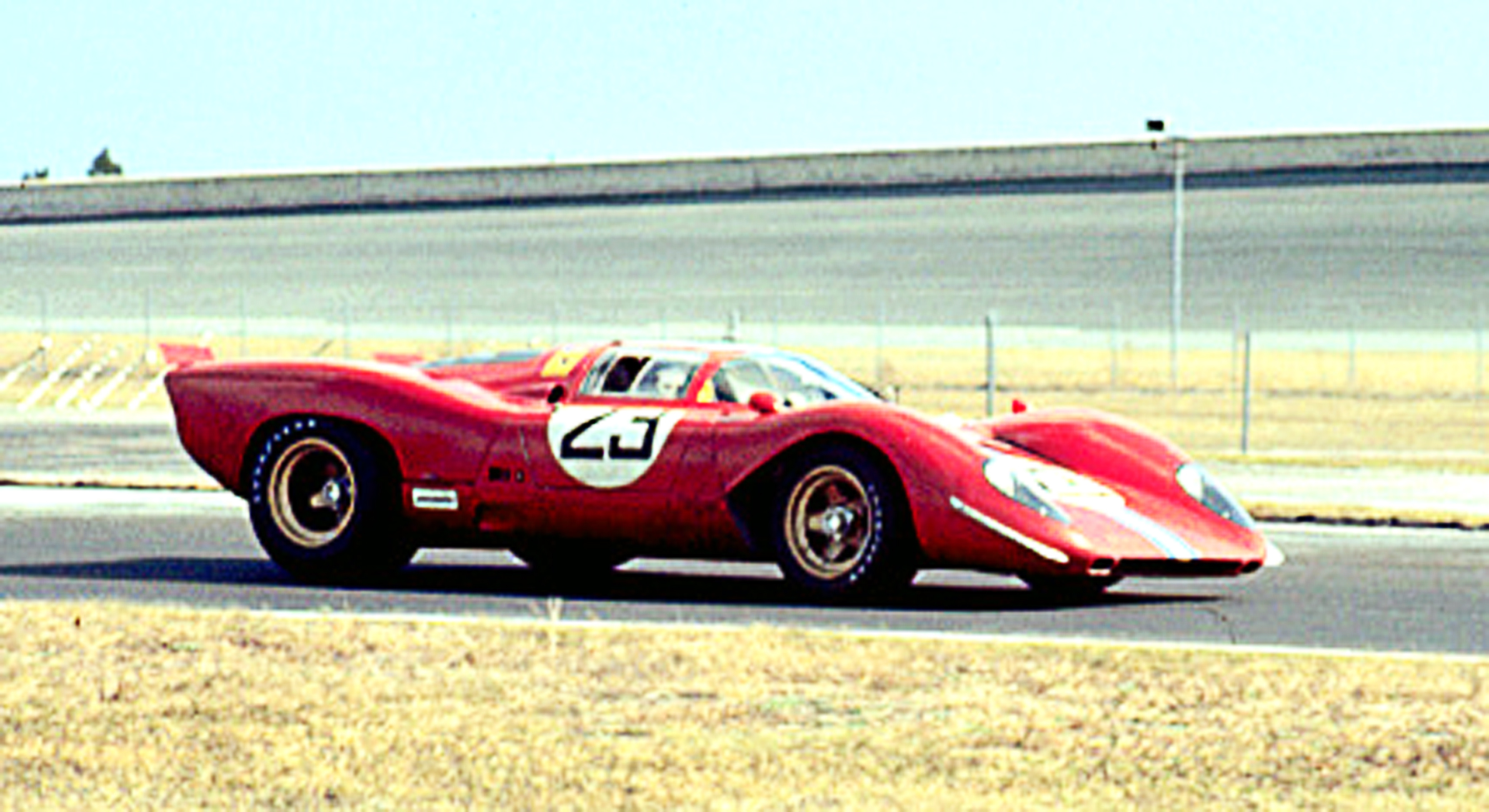
Adamowicz collection – Michael Keyser photo (autosportsltd.com)
The cockpit was a very tight fit, fortunately I am of short torso to fit the very low roof line. Parkes and Posey had a bubble added to fit their helmets, looking quite out of place in such a clean body and aerodynamic roof line. The Daytona banking and straight away allowed speeds close to 200 mph, nevertheless I felt we had a better overall aero package. Practice and qualifying went well for us, keeping in mind it was a long race and one must finish to win. I looked forward to the race, knowing quite well we would be a winning combination.
Getting behind the wheel, I couldn’t help noticing how incredibly agile and well balanced the chassis behaved. Compared to my Formula 5000 Eagle, I felt the latest F1 development showed its edge. The car was awesome, nimble in every way, allowing you to take lines out of the norm and still allow quick laps and ability to pass at every opportunity. One notices how important it is to have the mobility and stopping power of a fine-tuned machine.
Tony climbs aboard the #23 Ferrari 312P
From my perspective behind the wheel, the 312 P felt incredibly agile and well balanced; compared to my Formula 5000 Eagle, the latest Formula One chassis development really showed its edge. The car was just awesome, nimble in every way. You could take lines outside the norm and still manage quick laps, which gave you the ability to pass at every opportunity.

Adamowicz collection – Michael Keyser photo (autosportsltd.com)

Adamowicz collection
Tony Adamowicz, David Piper and CoCo Chinetti
Tony shrieks through the infield
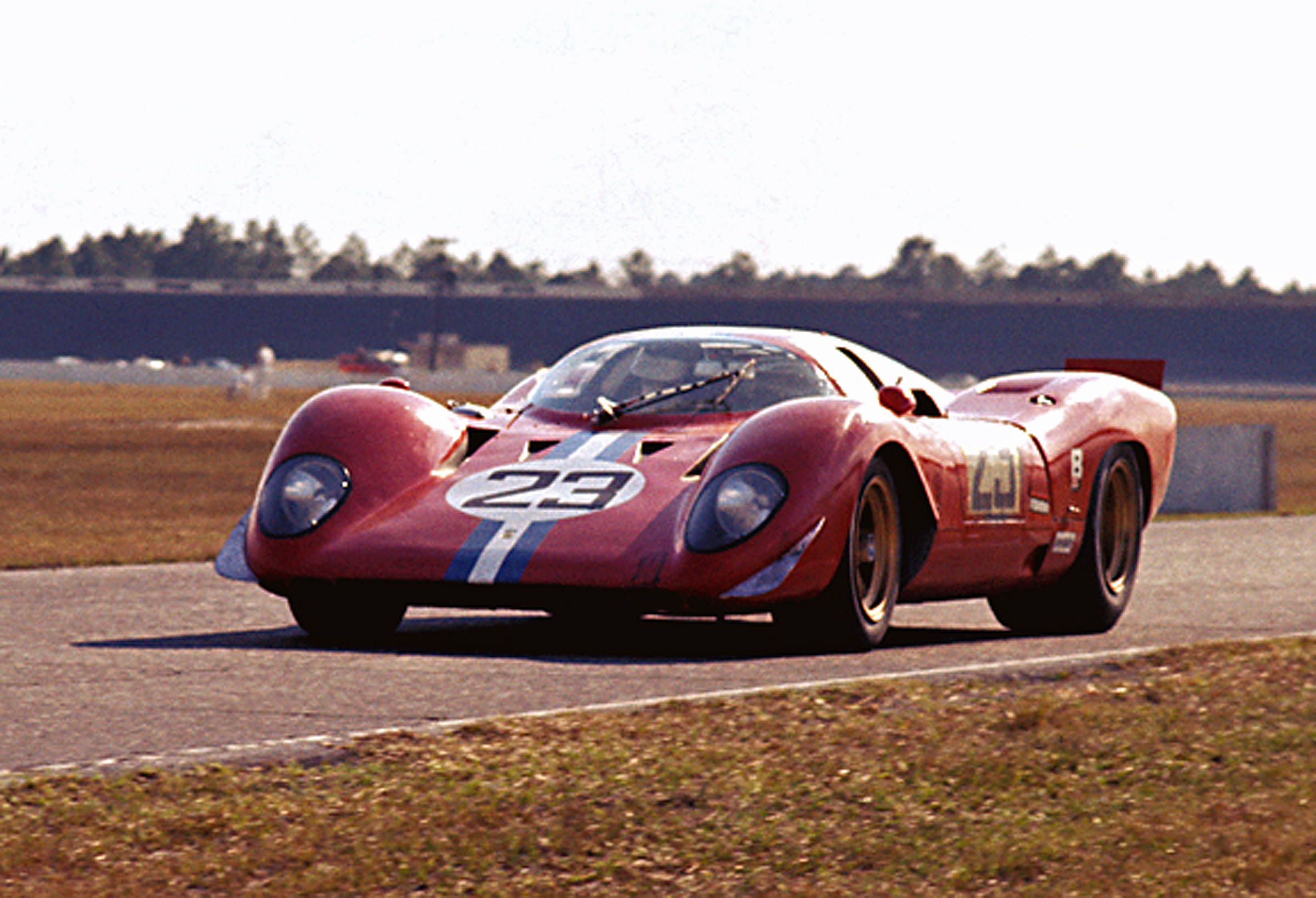
Adamowicz collection – Don Ludewig photo

Adamowicz collection – Bill Oursler photo
1970 Daytona: Scene in the NART garage. Tony’s door on #23 is wide open.
Pit stop and driver change

Adamowicz collection
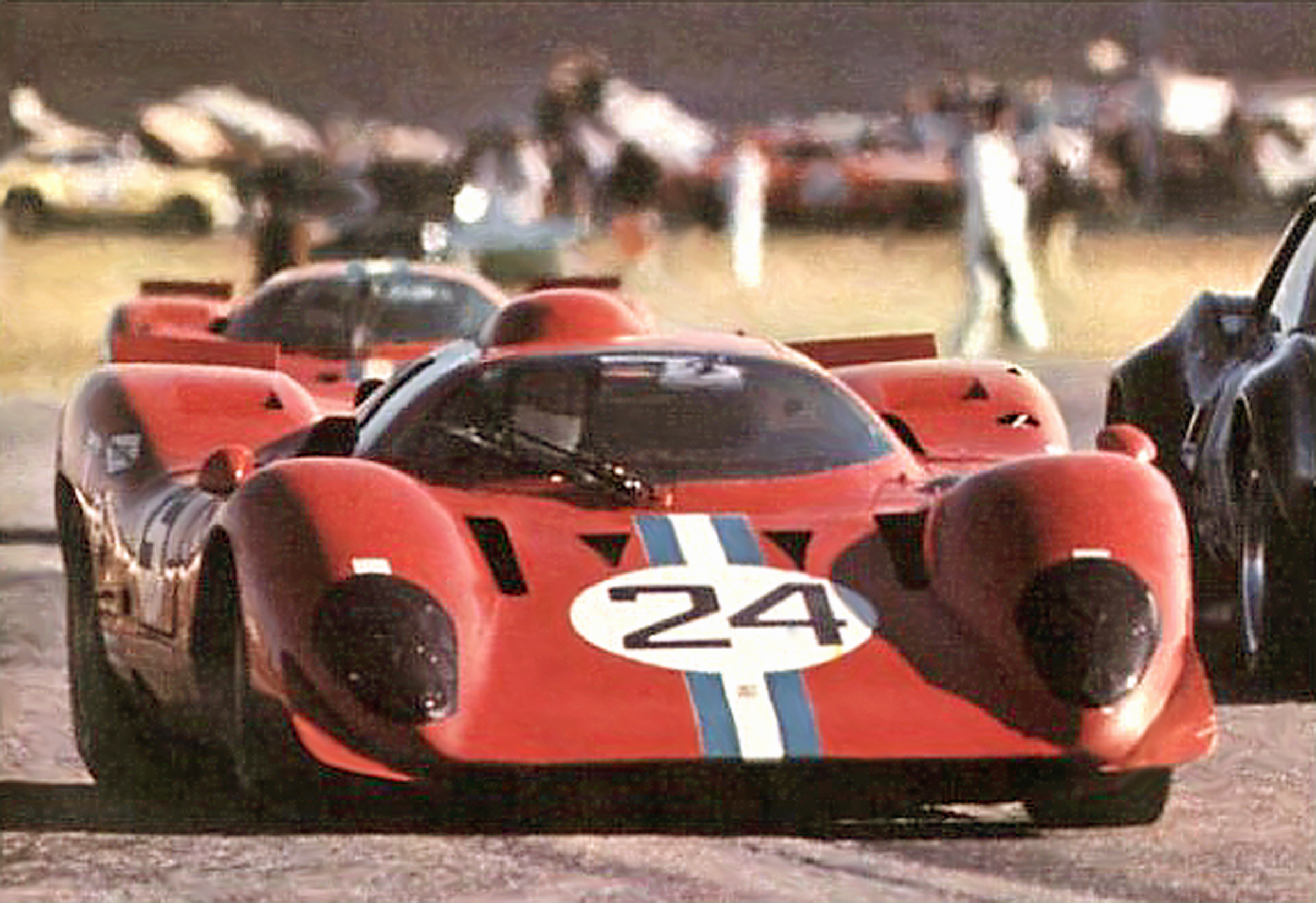
Adamowicz collection – Michael Keyser photo (autosportsltd.com)
The bubble-roofed #24 car was entrusted to teammates Sam Posey and Ferrari engineer Mike Parkes. Tony follows in this shot.
1970 Daytona Driver’s Meeting – In front row is Vic Elford, Jack Brabham, and Mario Andretti among others.
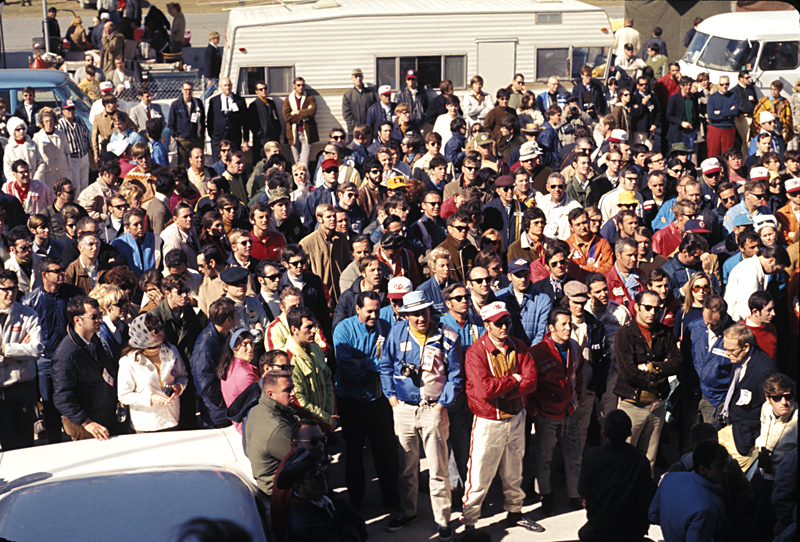
Adamowicz collection – Harry Hurst photo

Adamowicz collection – Harry Hurst photo
Mike Parkes and Sam Posey walk from their #24 Ferrari past Tony and David’s #23
The #23 Ferrari follows two French Matras into the infield.
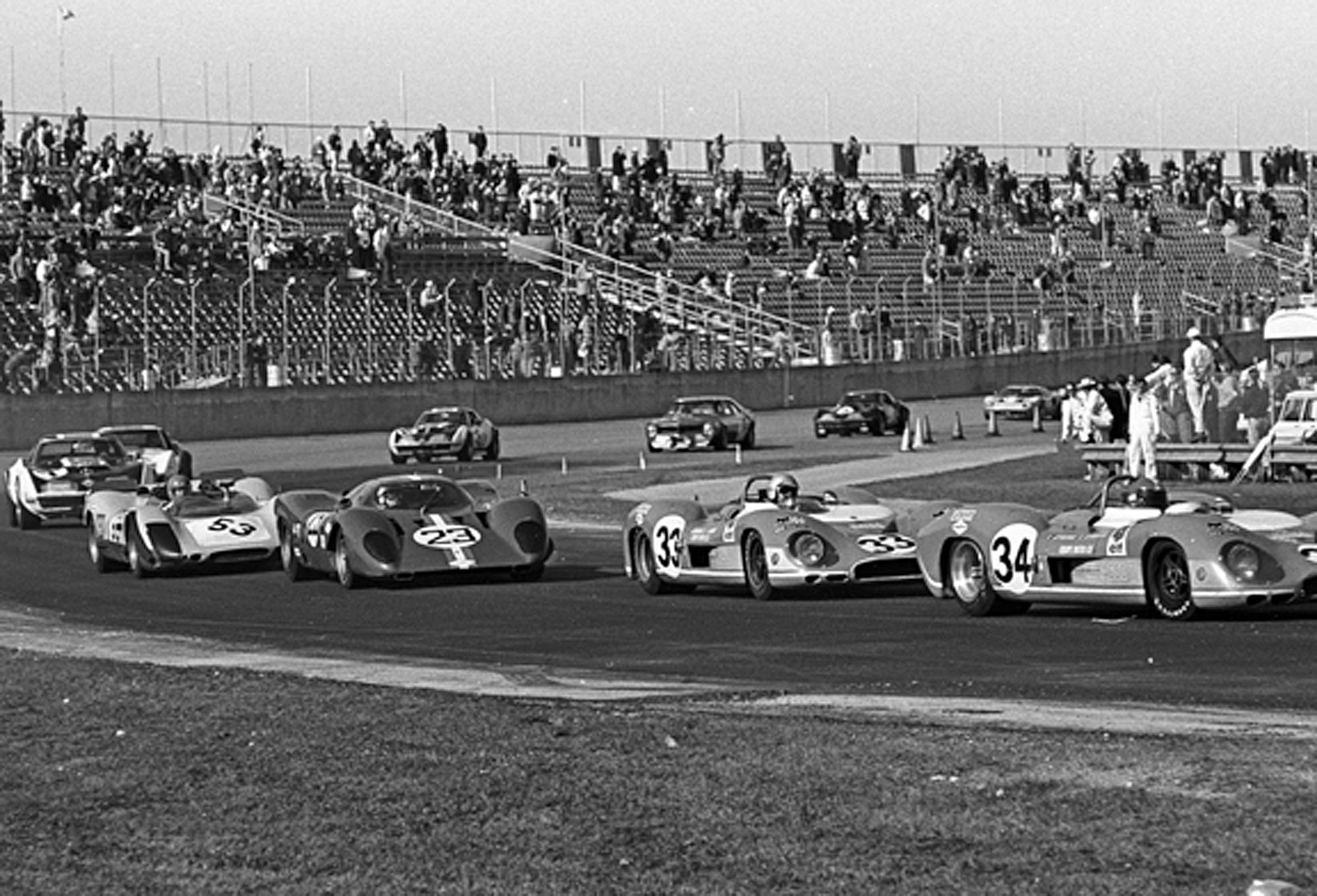
Adamowicz collection – Harry Hurst photo

Adamowicz collection – Philippe Moriniere photo
Disaster strikes while Tony and David are in the lead! Man on the left holds a light above his head as mechanics work on #23’s damaged radiator.
As the race sorted itself out, Parkes fell asleep approaching the banking and made contact with the wall, destroying the front radiator. His pit stop put us clearly in the lead after many lead changes during the race.
I was thinking this was too easy, when suddenly the race became an unbelievable change of events. The Daytona track base is made up of mostly coral. As the race continued, the track surface deteriorated, revealing coral under the surface. Bits of the coral kicked up and began to eat away at our radiator, which was mounted very low in the nose. The track conditions eventually rendered our own radiator useless and we were overheating!
On Daytona’s high bank: Battered by 24 hours of racing, the rugged 312P finishes 5th.
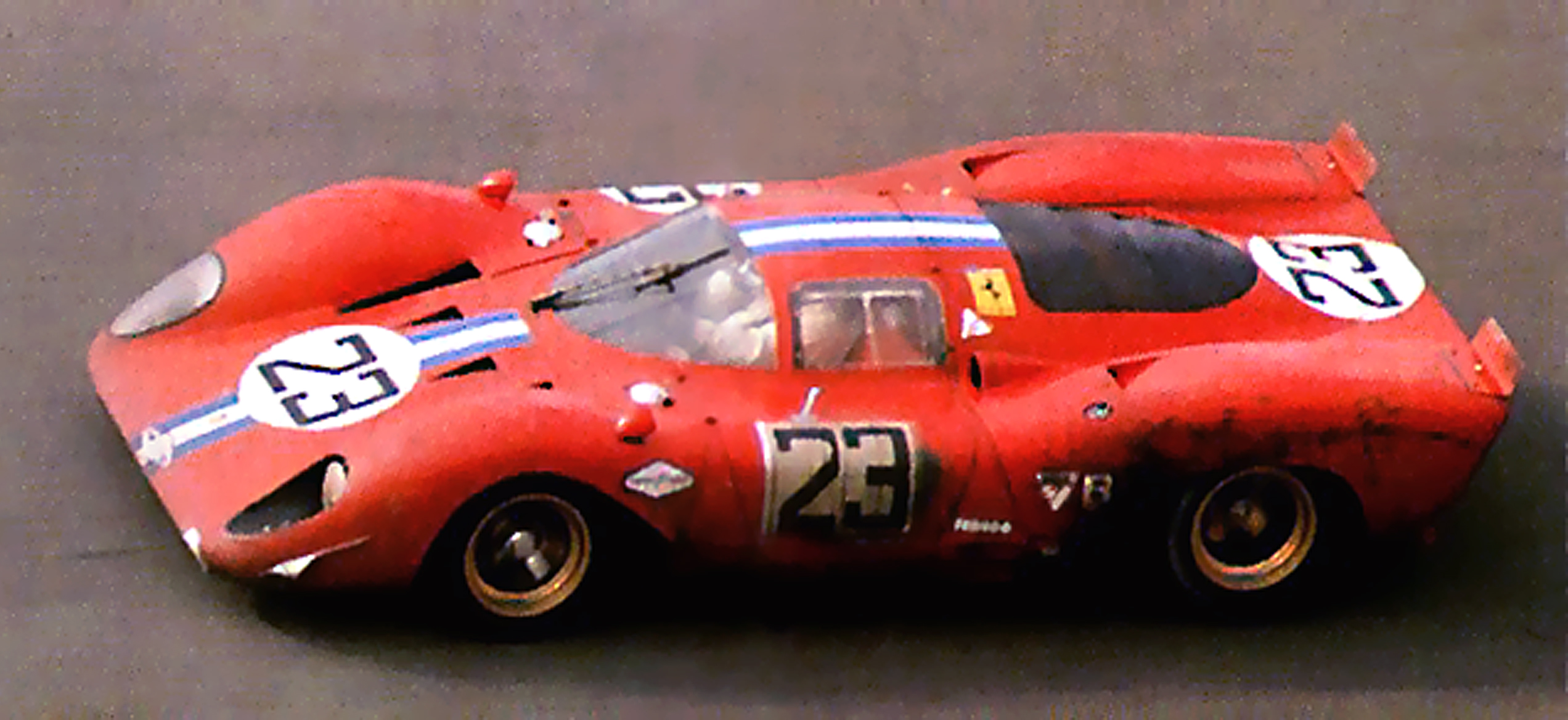
Adamowicz collection – Philippe Moriniere photo
Apparently the year before, Chris Amon had holed a radiator while running over some debris at Sebring in his 312P, and the venerable engine kept on running for a few hours to allow him a second place finish. Déjà vu we were in the same situation, with no Aqua in the system.
We were able to hold on to 2nd place while the Parkes/Posey chassis took over the lead. The amazing strength of Ferrari engineering let us finish 4th and 5th overall and 1st and 2nd in class behind larger displacement cars. I had the distinct honor to race both chassis: #0870 at Daytona & Sebring and #0872 Le Mans, without a doubt, one of the most underrated Ferrari’s ever, the 312P!
Encouraged with the one-two finish in class, NART’s Luigi Chinetti arranged for his son “CoCo” to drive with Tony at the Sebring 24 hours race scheduled several weeks later.

Adamowicz collection – Dave Kutz photo
The oil-stained Ferraris await tech inspection after the race.
1970 Daytona post-race – Tony’s girlfriend, Vicki Dokos, and Tony at the race

Adamowicz collection – Dave Kutz photo

Adamowicz collection – Bill Oursler photo
1970 Daytona in front of Jerry Thompson and John Mahler
Tony behind Mario Andretti’s Ferrari 512
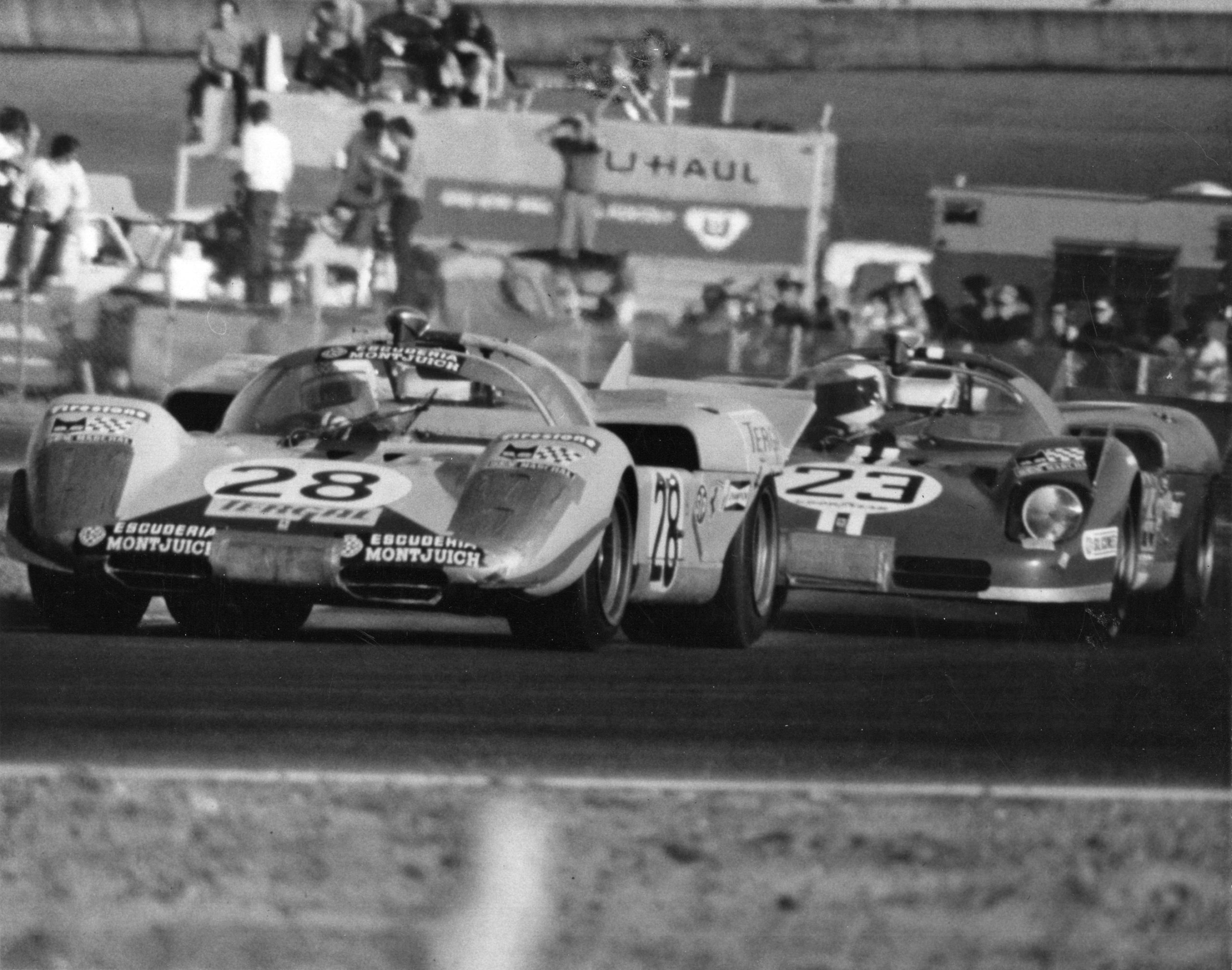
Adamowicz collection

Adamowicz collection
Here’s a photo of the 312P engine and transmission as it appeared when the car was raced as an open Spyder model in 1969.
24 Daytona Porsche 917 K Pedro Rodriguez

Adamowicz collection – Eric della Faille photo

Adamowicz collection – Bernard Cahier photo


In 2010 Vintage Motorsport magazine featured Tony in their “My Favorite Race” feature where Tony discussed his time in the 1970 24 Hours of Daytona.

